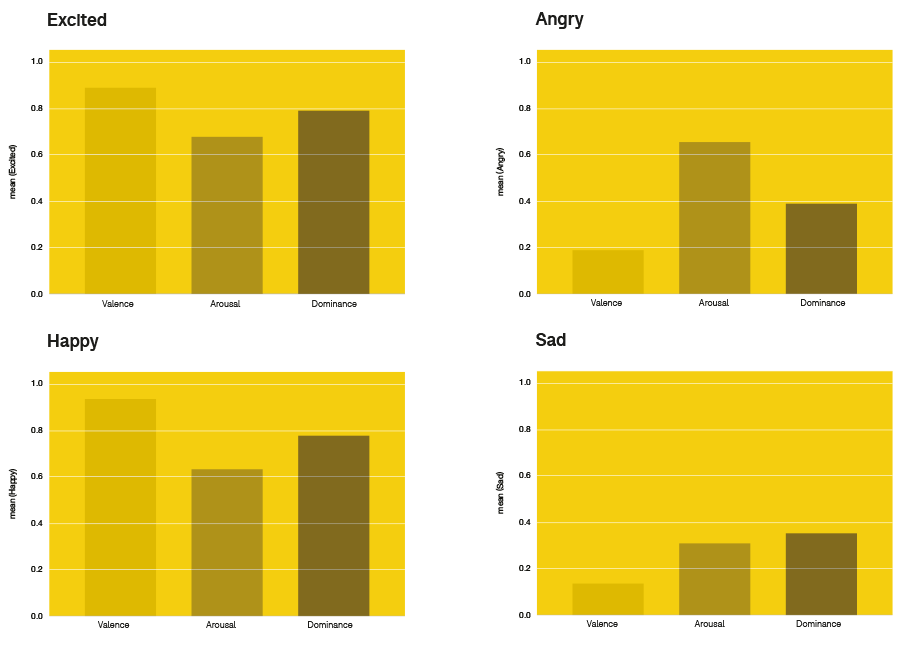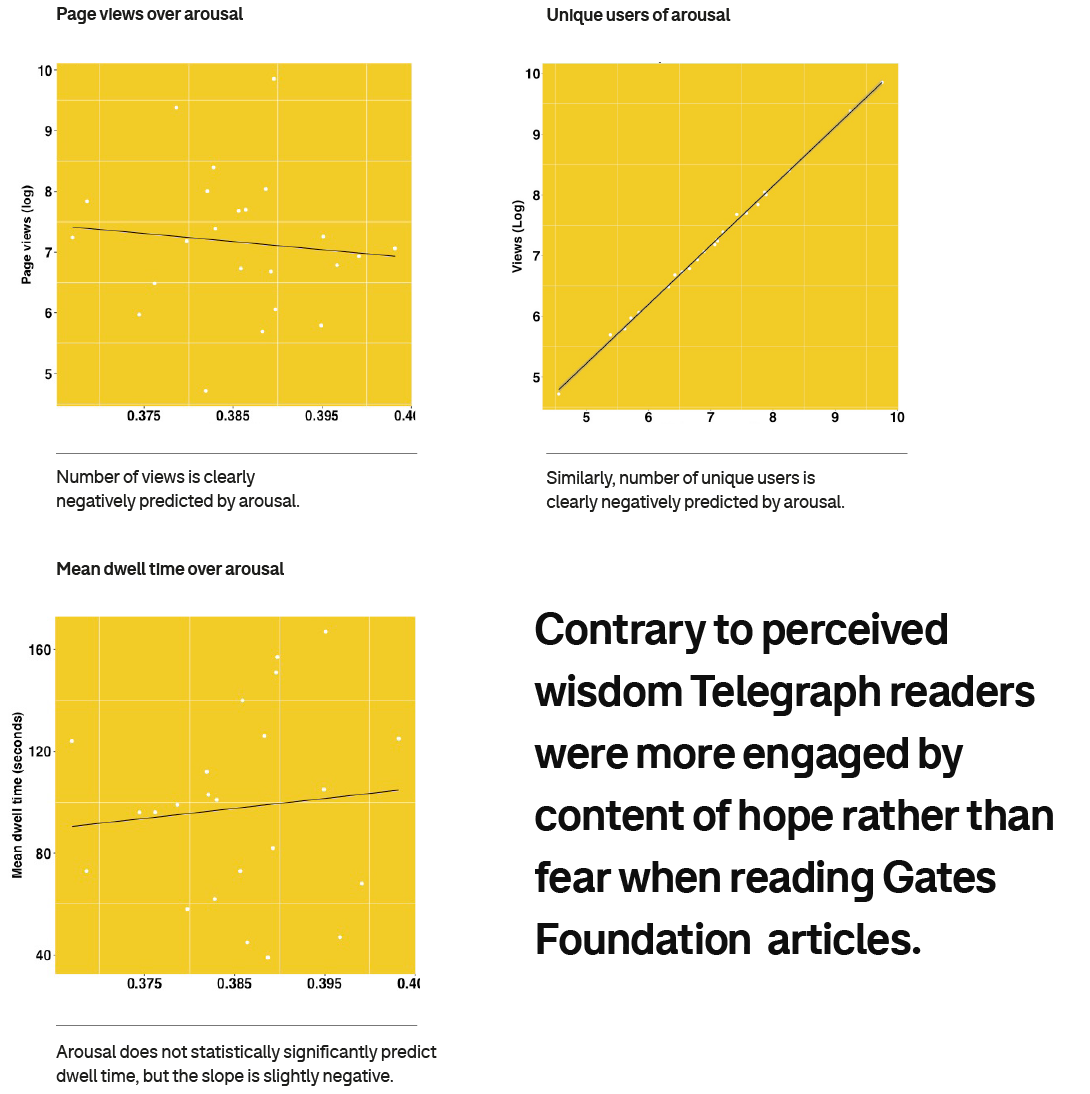
Defining the emotional signature of engaging content
Making content more sticky. Making writing more persuasive. Encouraging people to spend more time on the site. For news publishers this is a constant pursuit.
Texture have been working with The Telegraph analysing content and its performance to understand how language impacts performance, so we can deepen relationships between The Telegraph and their readers.

The graphs below show how typical emotions chart on the VAD scale.
To analyse content, Texture adopt a psychometrically respected model called Valence Arousal Dominance (VAD). VAD enables any emotion to be measured in terms of how pleasant or unpleasant it is (valence), how energising or sedating it is (arousal), and how autonomous or controlled it makes you feel (dominance).

Texture has a proprietary lexicon that assigns a VAD score to all the common words in English; moreover, we are growing it on a continuous basis. This allows us to instantly profile the emotional character of a piece of text.
Using VAD we analysed the Gates Foundation Global Health Challenges projec by The Telegraph. By correlating the impact of each article, measured by views, dwell time and number of unique users, with the emotional signature of the content, we defined the precise make up of content which connected.
The graphs below show how ‘arousing’ words impact performance.
The results demonstrated that readers are best engaged by articles that directly address challenging content—but in a manner that is positive and restrained.


Stylistically, this is aided by straightforward language that has an authoritative voice. Armed with the unique insight we were then able to benchmark all future content by these factors prior to publication.